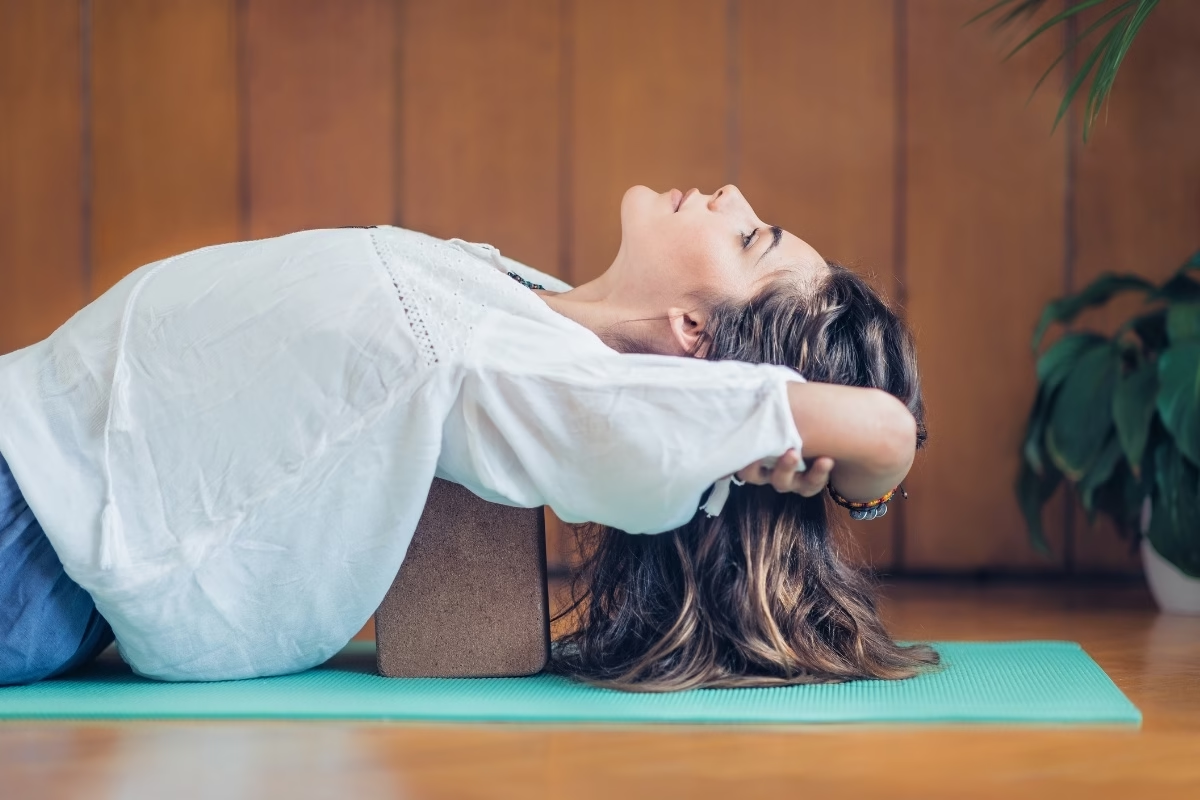Burnout. It’s a word we hear often, but its impact runs deep.
For many, burnout feels like a heavy fog—a state of exhaustion that blurs motivation, clouds joy, and leaves the body yearning for relief.
As yoga teachers, you have the opportunity to be a guiding light for your students, offering them not just physical rest but a pathway to emotional renewal.
Restorative yoga poses provide the perfect antidote to burnout.
These postures aren’t just about relaxation; they offer a profound sense of accomplishment, a reminder to your students that even when energy is scarce, they are capable of finding strength within themselves.
Imagine leading your students through a practice where each pose feels like a comforting embrace, yet challenges them enough to spark the confidence they’ve been missing.
To make your restorative yoga classes even more impactful, consider setting clear class intentions and selecting meaningful yoga themes that resonate with your students’ needs. These elements not only create a sense of purpose but also foster deeper emotional connection and alignment throughout the practice, helping your students feel seen and supported on their journey from burnout to bliss.
In this article, we’ll explore seven restorative yoga poses that strike the delicate balance between comfort and challenge. These poses not only help students break free from the cycle of burnout but also reignite their inner fire—leaving them feeling grounded, refreshed, and inspired.
1. Reclined Bound Angle Pose (Supta Baddha Konasana)
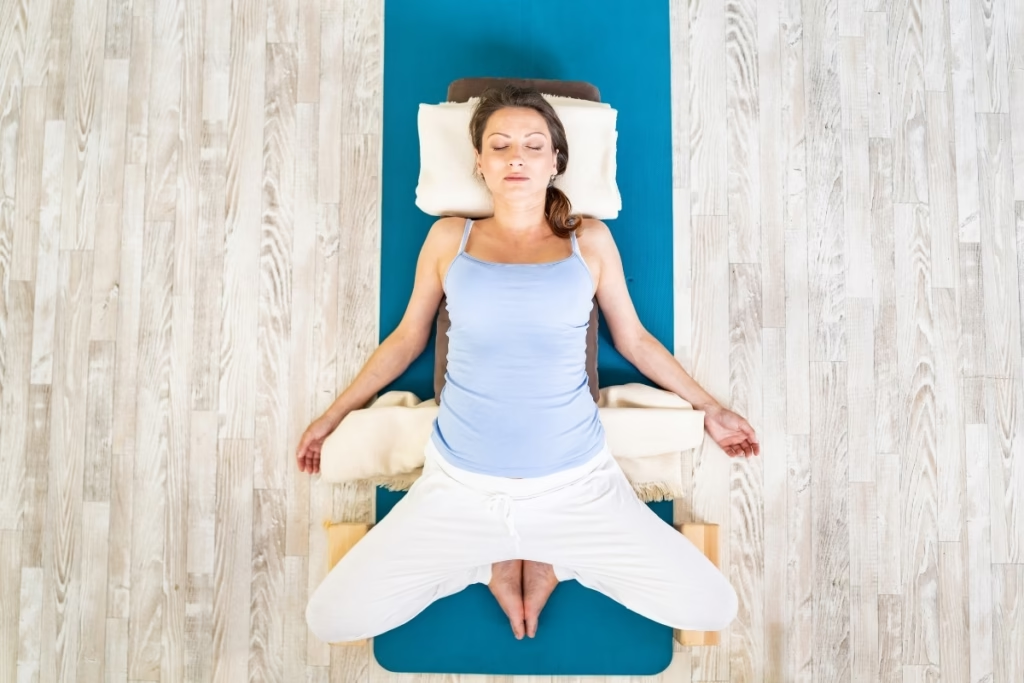
This restorative classic opens the hips, soothes the nervous system, and provides the perfect entry point for students in need of recovery.
How to Teach It:
- Have students lie on their backs and bring the soles of their feet together, allowing their knees to fall open.
- Use props like bolsters or rolled blankets under the knees for support.
- Place a bolster along the spine or under the shoulders to gently open the chest.
- Encourage students to close their eyes and hold for 5-10 minutes, focusing on slow, intentional breaths.
Why It’s Motivational:
The gentle stretch in the hips and chest offers a sense of physical release, which can feel both restorative and empowering. It encourages students to listen to their bodies while promoting a sense of ease and accomplishment.
2. Legs-Up-The-Wall Pose (Viparita Karani)
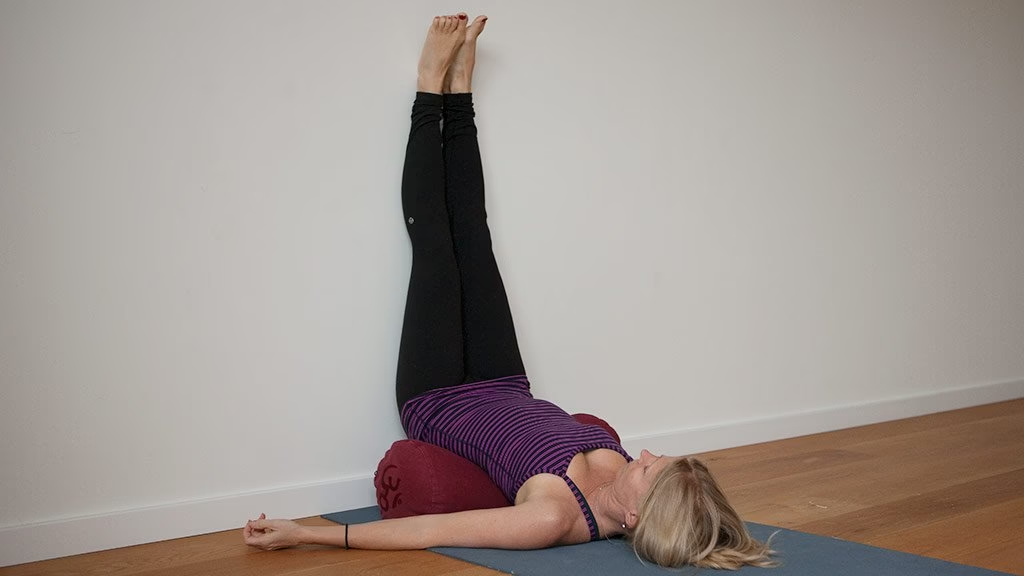
This soothing pose reverses the effects of gravity, helping to reduce fatigue, calm the mind, and energize the body.
How to Teach It:
- Guide students to sit sideways against a wall, then swing their legs up as they lie back onto the mat.
- Suggest placing a bolster under the hips for added elevation or a blanket under the head for comfort.
- Encourage them to rest their arms by their sides and hold the pose for 10-15 minutes.
Why It’s Motivational:
The restorative nature of this pose provides immediate relief for tired legs and an overworked mind. Students often leave this pose feeling lighter, refreshed, and more capable of taking on challenges.
3. Supported Bridge Pose (Setu Bandhasana)
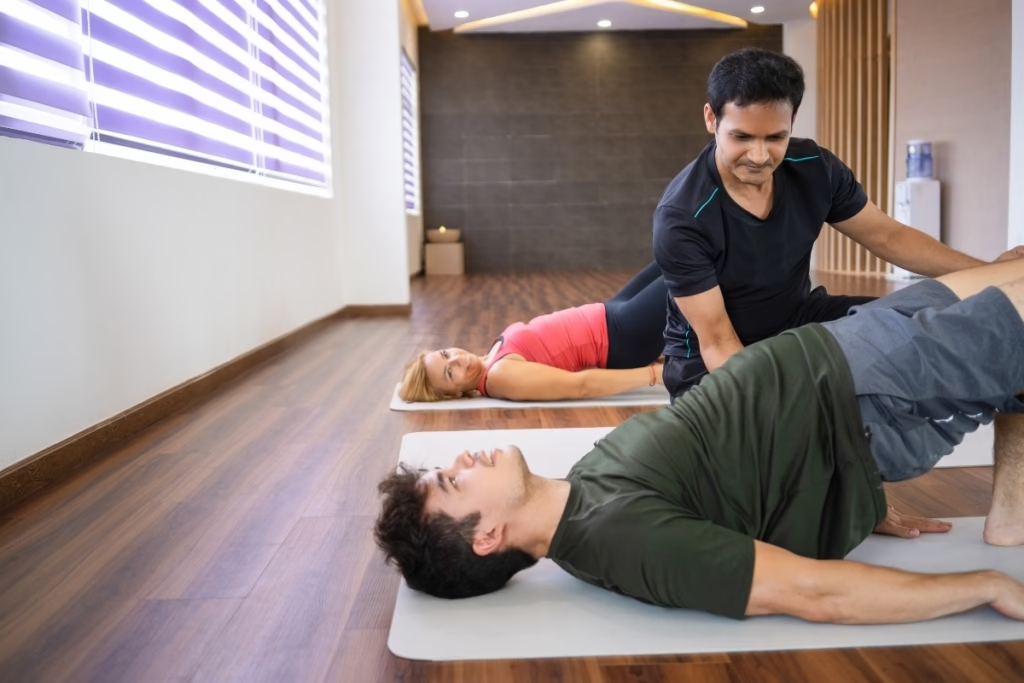
This pose gently engages the core and lower back while offering a soothing stretch for the spine.
How to Teach It:
- Instruct students to lie on their backs with knees bent and feet hip-width apart.
- Place a block or bolster under their sacrum to elevate the hips, encouraging a sense of support.
- Guide them to rest their arms by their sides and focus on steady, calming breaths.
- Hold for 5-8 minutes.
Why It’s Motivational:
The subtle activation in the lower body provides a sense of strength and empowerment while the support of props ensures comfort and relaxation. This balance helps students feel both challenged and cared for.
4. Child’s Pose with a Twist (Balasana Variation)
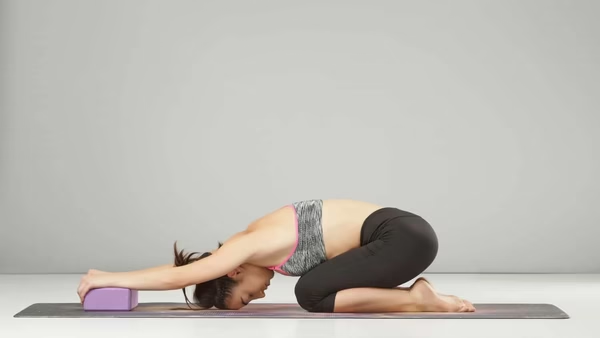
This modified Child’s Pose adds a gentle twist, creating a grounding sensation while releasing tension in the spine and shoulders.
How to Teach It:
- Guide students to kneel on the mat and lower their hips toward their heels.
- Extend their arms forward, then thread one arm underneath the other for a gentle twist.
- Rest their forehead on the mat or a block, and encourage deep, even breaths.
- Hold each side for 3-5 minutes.
Why It’s Motivational:
The combination of grounding and release helps students reconnect with their breath and body, fostering a sense of stability and accomplishment.
5. Reclined Twist (Supta Matsyendrasana)
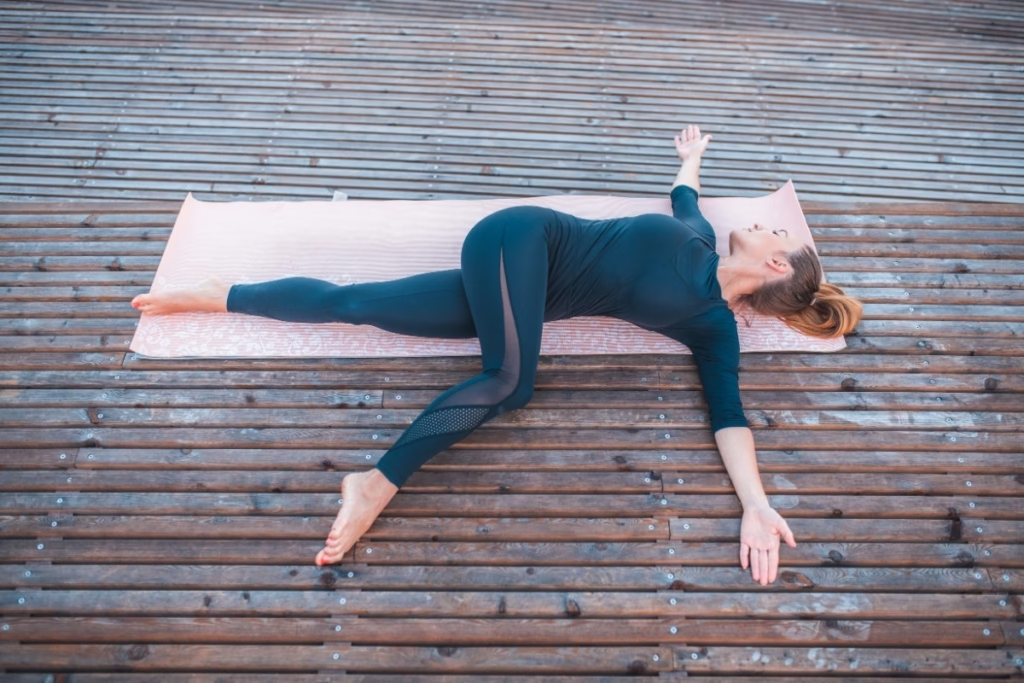
This restorative twist offers a gentle stretch for the spine and a soothing massage for internal organs, aiding in detoxification and relaxation.
How to Teach It:
- Have students lie on their backs and bring one knee across their body into a twist.
- Extend the opposite arm outward and let the gaze follow.
- Place a block or bolster under the bent knee for support.
- Hold each side for 3-5 minutes, focusing on long, slow breaths.
Why It’s Motivational:
The deep twist encourages emotional release while leaving students feeling both refreshed and balanced—a perfect antidote to burnout.
6. Sphinx Pose (Salamba Bhujangasana)
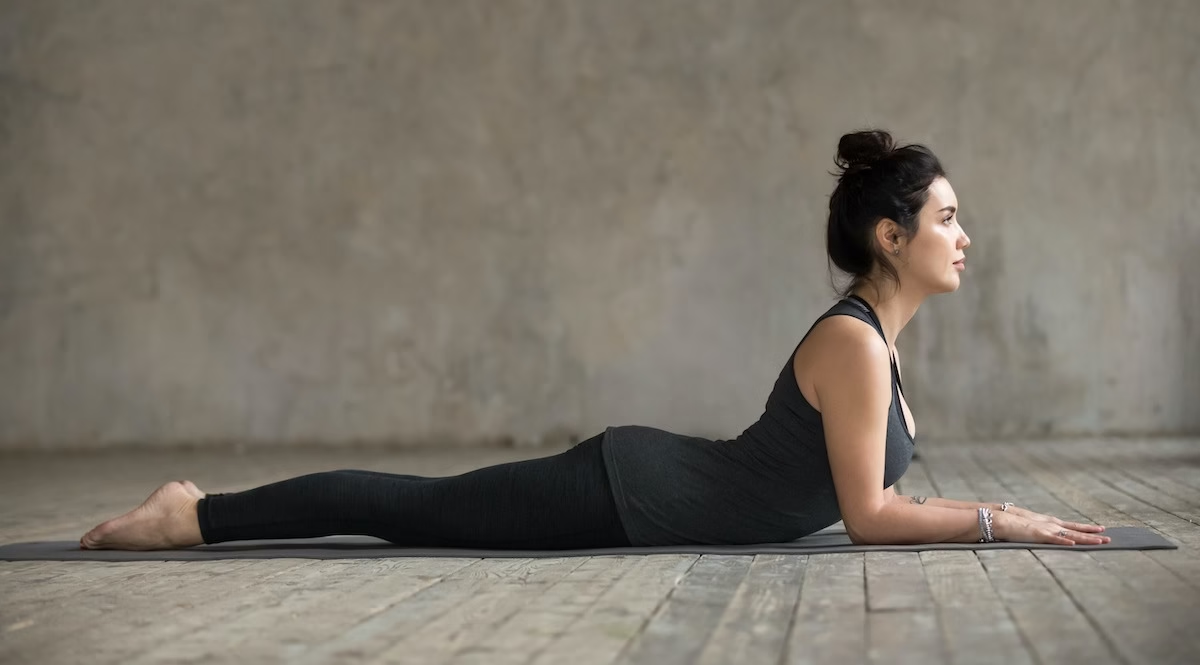
This gentle backbend energizes the spine while offering a restorative stretch for the lower back and abdomen.
How to Teach It:
- Guide students to lie on their stomachs, propping themselves up on their forearms.
- Encourage them to press gently into their hands and lift through the chest without overextending the lower back.
- Suggest holding for 3-5 minutes and focus on smooth, steady breaths.
Why It’s Motivational:
Sphinx Pose combines grounding with a subtle sense of activation, helping students feel engaged yet relaxed. It’s an empowering posture for those transitioning from fatigue to strength.
7. Supported Fish Pose (Matsyasana Variation)
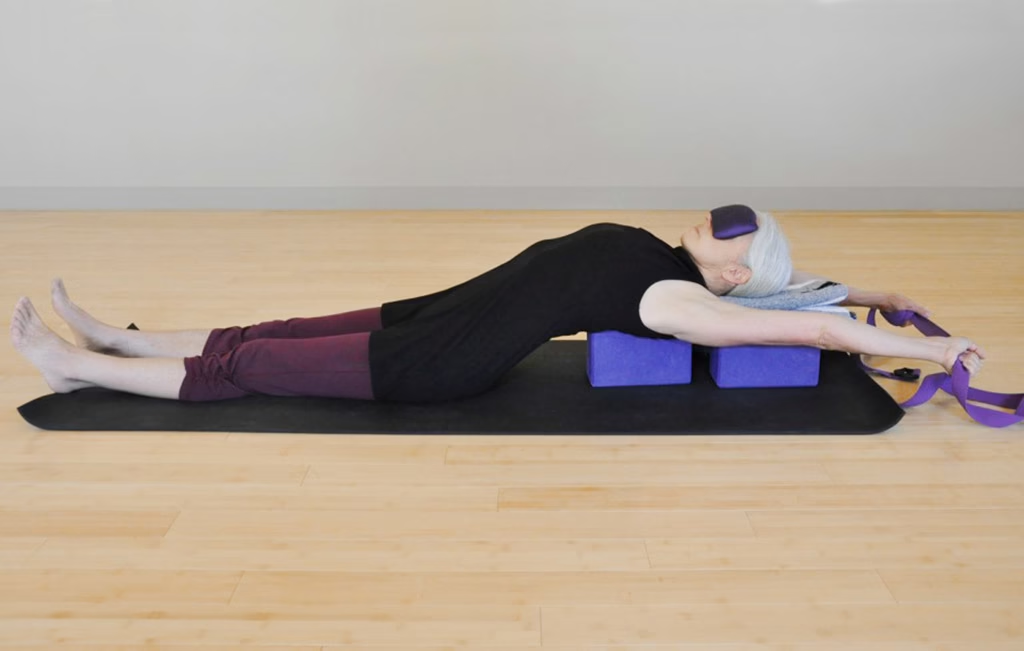
A heart-opening pose, Supported Fish encourages deep breathing and creates space for emotional release.
How to Teach It:
- Place a bolster or two blocks under the upper back and head, allowing the chest to gently open.
- Have students extend their legs or keep them bent for added support.
- Instruct them to rest their arms by their sides, palms facing upward.
- Hold for 5-10 minutes.
Why It’s Motivational:
The expansive chest opening promotes better breathing and a sense of openness, which can be transformative for students emerging from burnout.
Final Thoughts: Empowering Students Through Restorative Yoga
Restorative yoga poses are more than just a method of relaxation—they’re a journey back to balance, self-awareness, and strength.
As a yoga teacher, your guidance helps students rediscover their resilience, even in moments of exhaustion. By combining restorative postures with motivational elements, you create a practice that’s not only calming but also empowering.
When students experience the subtle challenge of holding a restorative pose and the joy of emerging from it refreshed, they’re reminded of their capability to overcome life’s challenges. These moments of accomplishment can be the catalyst for profound emotional and physical healing.
Clearly, restorative yoga offers a transformative path from burnout to bliss, but your teaching journey doesn’t end there.
Explore more ways to support your students with guides on beginner yoga poses, basic yoga poses, and advanced yoga poses to cater to every skill level. Add variety to your classes with couple yoga poses or dive deeper into relaxation with yin yoga poses.
And for seamless class planning, don’t forget to use our Yoga Deck, a powerful tool to help you create inspiring and effective sequences with ease.

